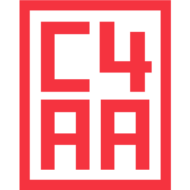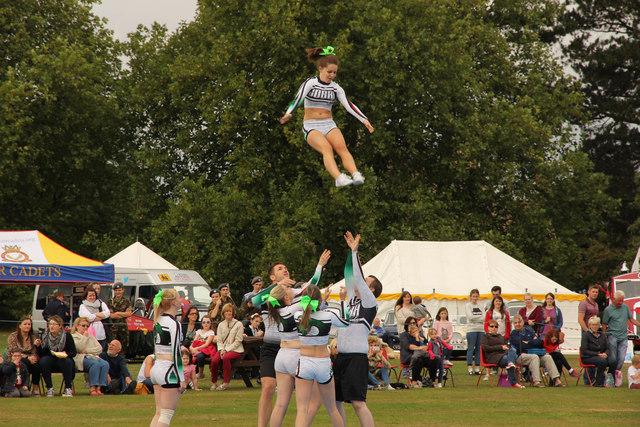PREAMBLE
On Friday June 24, 2022 the United States Supreme Court overturned Roe v. Wade. Along with the shock, grief, dread, and anger we’re feeling, many people are wondering what they can do in this moment.
We don’t have a silver bullet that can solve this. If we did, we’d all be doing it. However, there are many organizations that have been working on reproductive health for a long time. They have far more expertise. Instead of trying to solve such a vast and systemic problem on one’s own, the most effective thing we can do is join and support those organizations.
What follows are not instructions on actions you can take as an individual. They are tips to help be most effective within a larger organization, using all the skills and talents that you have — as artists, creative people, people who want to approach activism in innovative ways — to do the most good that you can. Only together can make the largest steps forward.
It might be hard to imagine moving forward in such a dire moment. The future can only be imagined. But when we imagine the future, the many paths to failure can be very clear. The paths to success are often much harder to see – as if obscured by a fog. But the way to see paths to success through a fog is by moving forward into it.
With almost half a century of abortion rights dissolving into thin air, it is understandable to want to make a grand gesture in response. But instead I would recommend taking a breath, assessing your resources and tapping into the work that is already being done in your community. If all of us do the same in our communities across the country, we have a chance to stave off at least some of the worst outcomes of a post-Roe America. That is the work now. Let’s get to it.
– Robin Marty, from her New York Times column after Roe v. Wade was overturned. Marty is the author of The New Handbook for a Post Roe America
With the Center for Artistic Activism, I have been fortunate enough to work with organizations fighting for change in several different locations around the world. Over time, and from hard-earned lessons, my colleagues and collaborators have learned some ways to be more effective.
I share them here and hope they will help you.
ARTISTS AND SOCIAL MOVEMENTS CAN WORK WELL TOGETHER
The first thing to know is that creativity and social movements have always worked together. To do so, it’s important that each side of the collaboration trade leadership and expertise. For example, when it comes to research and analysis of an issue, an organization has probably already done more than an individual. Those on the arts side can step back and use that expertise. Whereas idea development and the hands-on can be led by those with more practice in those areas. Plan to trade roles and leadership, and to play complementary roles in your collaboration.
FIRST STEPS
Do some research.
You don’t need to know everything. (You never will.) And no one should ever get upset with you for having less experience with the details of the issue or the organization. Do just enough research to find a few organizations you might like, using strategies that you appreciate – then get started.
Try before you buy.
There’s going to be an organization that really values you and what you do. Where you love to be and can’t wait to go back. That may not be the first organization you work with.
It’s like picking a diet, or a therapist – you need to find the right match for you. I could tell you what works for me, but that doesn’t matter much. Start by doing some volunteering, get a sense of a place, then find where you can be a good fit, or try another.
INITIAL CONTACT
Don’t tell them who you are.
Don’t bust open the doors saying, “I’m an artist/designer/musician/whatever and I can help you!” People tend to think of creative people in terms of what they make instead of how they make it. The real power is how we go about finding innovative solutions to problems. But if you say you’re a designer, they’ll probably just think it’s cute, and at best they’ll ask you to design some print materials. They likely won’t even realize that your experience with creative work can directly relate to the objectives they’re working on and make their tactics more impactful in practical ways.
Build trust.
Listen well. Be dependable. Be flexible. Be very open and curious about what you don’t know. Ask questions and show you understand. Admit when you’ve made mistakes.
Gather information – what has this organization tried already? What do they think works well? What needs some help?
GETTING CLARITY
Most organizations have goals and objectives they’re working on. They may be crystal clear. If they’re busy, their objectives may be a bit out of date or muddled. Regardless, you need to be very clear on what the organization is trying to achieve in the near term. The more specific this is, the more it opens up creative possibilities.
Focus on outcomes.
What’s the ideal outcome on the issue? Don’t focus on problems or obstacles. Don’t wander through the broad topic itself. Don’t focus on what would make a cool project for your portfolio or to present on at a conference. Don’t focus on materials or methods you’re already familiar and comfortable with.
Focus on what you want to have happen.
Ask people at the organization what would feel great to get done? What seems like a stretch? Be ambitious.
Remember, raising awareness is not an objective and it’s not an outcome. It’s a method, a tactic. It can be part of the process, but awareness alone is not change. Think about the behaviors and policies that raised awareness leads to. That is where to aim.
Write down strong objectives.
You’ll be more successful at artistic activism if you can clearly state the mile-marker you’re trying to reach. Good objectives clarify the whole project and open up new possibilities for tactics.
We highly recommend learning and using “SMARTIE Objectives.” We talk about the importance of this in our book, The Art of Activism: Your All Purpose Guide to Making the Impossible Possible, but you can find additional information online.
In brief, SMARTIE stands for
- Specific
- Measurable
- Achievable
- Relevant
- Time-Bound
- Inclusive
- Equitable
CHOOSING THE THING
Go for quantity.
When developing new ideas, I’ve seen countless times where organizations want to charge ahead with the first “good idea” they hear that could work. You don’t get a good idea by sitting down and trying to “think of a good idea.” Maybe you know this already because you’ve tried and failed. You find good ideas by coming up with a lot of ideas then choosing among them, testing, and experimenting.
With the Center for Artistic Activism, we will often move forward with multiple promising project ideas at once. Then we choose the ones that we believe will move us closest to our objective. We also strongly consider the ideas we’re most passionate and excited about (because that’s important too).
Use mock-ups and prototypes.
The people you work with may not have the same visual imagination that you do. Drawing up what you’re talking about helps a lot to communicate the ideas and get everyone on the same page. It will also help you develop an idea and improve it. Whether your sketch takes the form of stick figures, crude digital collages, a high quality rendering, or acting it out live doesn’t matter as much as putting the visuals in front of your collaborators.
Show them the sketch. Then listen.
Get good feedback
Good feedback will make your project stronger. Asking the right questions is important. “Do you like it?” or “what do you think?” will not get you good feedback.
Here are a few questions from Center for Artistic Activism Executive Director, Rebecca Bray, that we use.
- What was surprising?
- What was confusing?
- What made you want to learn more?
- What were you turned off by?
- How would you describe this to a friend?
MAKING THE THING
Be a good collaborator.
Be a good collaborator. Manage the project well so that it’s easy for others to jump in and help. Remember that you’re there to help – everyone is underpaid and has more work than they can manage. So make the work easier, increase impact, and avoid causing more work whenever possible.
Most people I’ve worked with are very capable and motivated. When they can access a central plan of what needs to get done they can more easily join and take part.
Trust each other.
When working as a team, strive to share work with others, and trust them to make good decisions and do good work. Leadership in the project should shift and change (and it shouldn’t always be you).
Incorporate failure.
To be innovative requires taking risks. Set expectations because every attempt can’t be 100% successful. You can increase your odds by using mockups, prototypes, rehearsals, and revisions. You can try to anticipate problems and incorporate them into your plan. You can create multiple plans. However you do it, allow for experimentation. Only then can you create space for efforts to unexpectedly succeed beyond anyone’s expectations.
CLOSING
Have fun.
Because fun is sustainable.
Roe being overturned happened because of an effort that kept momentum over half a century. Winning those rights back isn’t going to be quick. Most positive change has a long arc. We’ll need to be in this for a long time and burnout is a real issue among activist efforts.
But creativity, joy and fun make this work sustainable for you and the people you work with. Try to have fun.
If you need further convincing, this quote is from a letter written in 2011. It is from the occupiers in Tahir Square written to other occupiers around the globe. They end their message this way (emphasis mine):
By way of concluding, then, our only real advice to you is to continue, keep going and do not stop. Occupy more, find each other, build larger and larger networks and keep discovering new ways to experiment with social life, consensus and democracy. Discover new ways to use these spaces, discover new ways to hold on to them and never give them up again. Resist fiercely when you are under attack, but otherwise take pleasure in what you are doing, let it be easy, fun even. We are all watching one another now, and from Cairo we want to say that we are in solidarity with you, and we love you all for what you are doing.
Occupiers in Tahir Square, October 2011
These are suggestions, not rules.
There are times the recommendations above may not apply. There may be valuable ideas I missed. In that moment, trust that you and your collaborators will find the right answer.
You have many different skills.
Remember whoever you are, you have many different skills. Everyone is creative, everyone does some kind of advocacy, at some point everyone organizes around outcomes. You’re not just the creative person, and you’re not just an organizer. You will have ideas that are relevant and you can jump in and help.
Don’t underestimate yourself.
You can make valuable contributions. If you can throw a good dinner party, you have everything it takes. The skills you already have are the very things that can make you a successful artistic activist.
The Center for Artistic Activism is running a special Learning Lab around reproductive rights, open to all, starting in July. The Art of Activism book is available from O/R Books and the accompanying Art of Activism Workbook is available as a free download.



